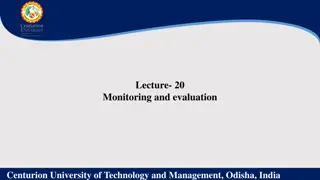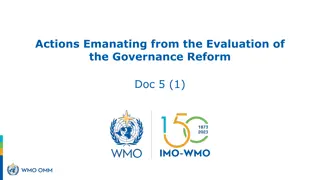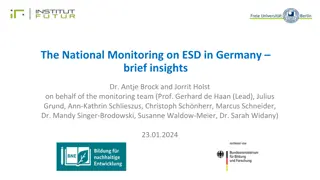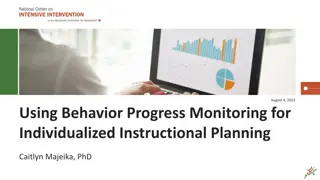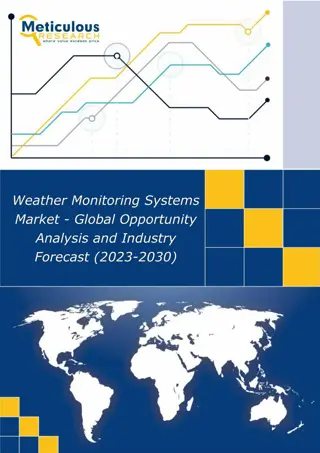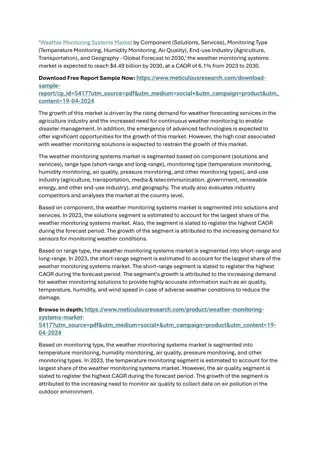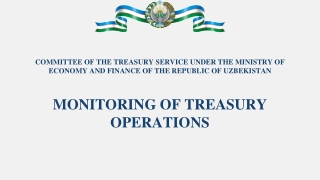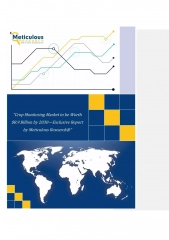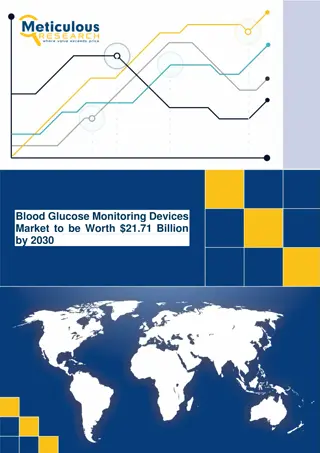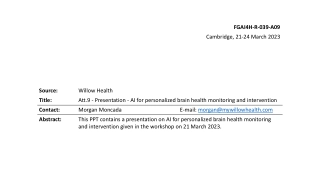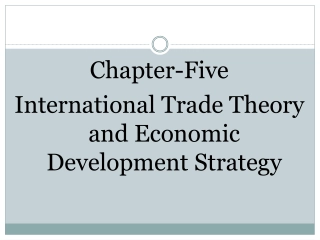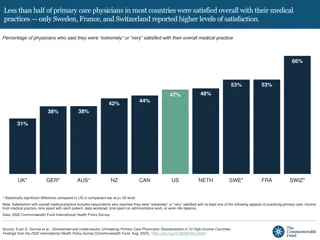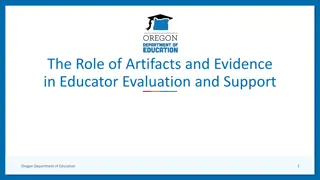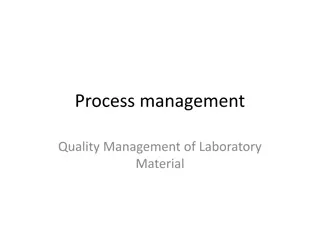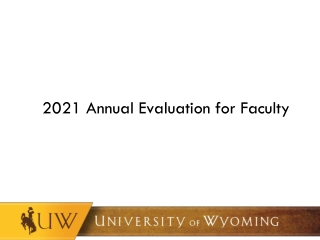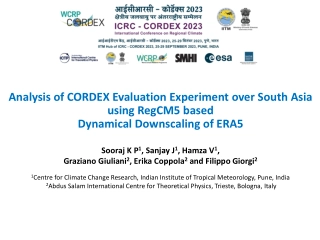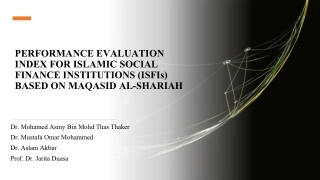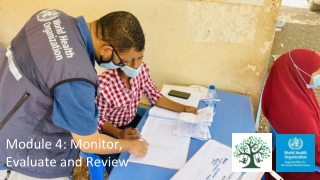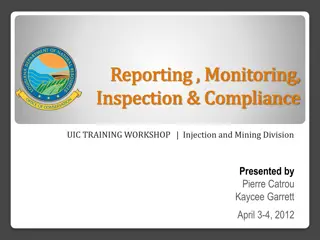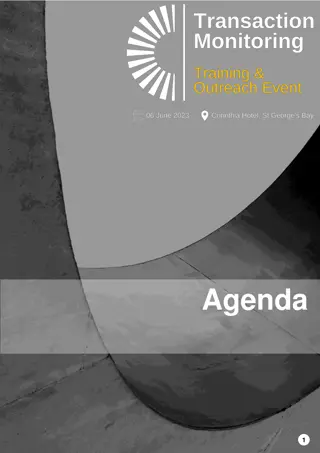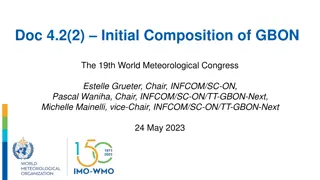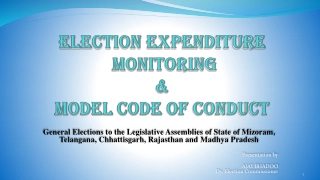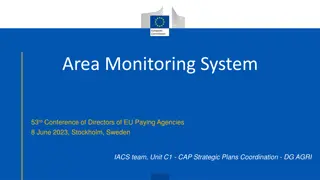Challenges and Opportunities in Monitoring and Evaluation in OECD Countries
Monitoring and evaluation in OECD countries present unique challenges and opportunities, requiring clear mandates, ongoing processes, and robust institutional frameworks. The OECD approach emphasizes fostering quality, ensuring impact, and sharing lessons learned for efficient resource management. Institutionalization of monitoring and evaluation practices is crucial for promoting performance management and resilience across different actors amidst governmental changes.
Challenges and Opportunities in Monitoring and Evaluation in OECD Countries
PowerPoint presentation about 'Challenges and Opportunities in Monitoring and Evaluation in OECD Countries'. This presentation describes the topic on Monitoring and evaluation in OECD countries present unique challenges and opportunities, requiring clear mandates, ongoing processes, and robust institutional frameworks. The OECD approach emphasizes fostering quality, ensuring impact, and sharing lessons learned for efficient resource management. Institutionalization of monitoring and evaluation practices is crucial for promoting performance management and resilience across different actors amidst governmental changes.. Download this presentation absolutely free.
Presentation Transcript
Monitoring and evaluation in OECD countries Challenges and Opportunities Titouan CHASSAGNE, Policy Analyst, Public Management and Budgeting 09 March 2023
Monitoring and evaluation: different but complementary practices MONITORING POLICY EVALUATION To determine relevance, efficiency and effectiveness and learn what works, what does not, for who and why To monitor implementation and the achievement of policy objectives against set targets Episodic and issue-specific Attribution is usually a key question Targeted resources needed for each evaluation Ongoing and routinised processes Attribution is generally assumed Resources are usually part of the programme Creating a market for M&E requires solving complex challenges: > Need to generate political interest and linkages between policy planning and budgeting processes > Often low/fragmented capacity and data literacy inside public administration (especially in sub national governments). > Availability and access to high quality data is often a challenge. > The information to be taken into account by decision-makers is multiple and complex. 2
The OECD approach to monitoring and evaluation Longstanding OECD expertise Set an institutional framework Performance and Results Working Party OECD Recommendations on Public Policy Evaluation (2022) Evaluation Expert Group Survey on M&E 2019: 42 respondent countries Ensure impact Foster quality Lessons learned on state-of-the-art institutional arrangements, mechanisms and instruments for efficient allocation and management of resources in the public sector Country specific projects 3
Institutionalising monitoring and evaluation Why does institutionalisation matter? How to institutionalise M&E? > It helps promote performance management practices and routines increasing their sustainability. 1. Establish a legal framework or a high-level guidance and establish support to the systematization of the practice. > It clarifies the responsibilities across several actors. 2. Attribute clear mandates across actors. >It ensures resilience following changes in government changes through legislation. 4
Attribute clear mandates for monitoring and evaluation MONITORING: Delivery Units EVALUATION: Evaluation Champions Several countries have established delivery units in strategic positions Evaluation champions are institutions whose mandate is to coordinate policy evaluations across the government To ensure a good coordination and reporting of performance information to high-level decision makers They provide incentives to line ministries and agencies to conduct evaluations Delivery units help agencies work across organizational silos to achieve the key decision- makers targets (e.g. PM s priorities) Evaluation champions should be in strategic positions (e.g. Prime Minister s Office or Ministry of Finance) They exist in different countries and can be very useful at different levels 5
Why is quality important and how to foster it? Good quality M&E is important because it enables: The quality depends on several determinants : 1. Defining the right indicators and targets (unit of analysis, definition of objectives, indicators, targets, etc.) 2. Data collection methods (frequency of data collection, cost vs. use, data sources, etc.) 3. Evaluation techniques 4. Human and financial resources (analytical and organizational skills) > To determine whether the results produced represents credible evidence; > To foster trust and use of information collected; > Ultimately, it enables effective public policy design and better outcomes. 6
How do OECD countries promote the quality of policy evaluations? Government guidelines for policy evaluation 26 9 Provisions expressed in a policy/legal framework 14 21 Competence requirements for evaluators 13 22 Peer review (internal/external) of evaluations 10 25 Systematic and meta evaluations 5 30 Other 10 25 Yes No n= 35 OECD member countries Source: OECD (2019) Survey on Policy Evaluation 7
Why ensure impact and how? How to foster it? Why is use important? 1. Link performance information to formal decision-making processes like budgetary processes. > Increase accountability as well as higher engagement towards collective results 2. Effectively communicate data with the general public. > Increase trust > Identify problems and lift roadblocks related to the implementation of a public policy. 3. Discuss results internally by establishing performance dialogues or management response mechanisms. 8
How do OECD countries promote the impact of policy evaluations? Incorporation of findings into the budget cycle 21 14 Platform to promote the use of evidence (e.g. webpage, database, clearing house, etc.) 12 23 Discussions of findings at the Council of Ministers 11 24 Management is required to respond to evaluation 10 25 recommendations No specific initatives in place 8 27 Yes No n= 35 OECD member countries Source: OECD (2019) Survey on Policy Evaluation 9
Communicating performance information Publicly available dashboard to monitor progress of government priorities at the local level The barometer includes information on the implementation progress of 43 policy priorities since 2017. Result indicators are available at the national and local levels (both regional and departmental) The dashboard also directs users to relevant information on how to benefit from each policy 10
Key takeaways > Laws and policy frameworks can be helpful to systematise monitoring and evaluation systems. > To ensure its usefulness, quality of monitoring and evaluation must be ensured by investing in the right data, skills, technologies and by involving stakeholders. > As performance information can serve different goals, it is important to clarify and understand which use is needed and adapt data collection, communication strategies and management tools accordingly. > Investment in linking, communicating, and reporting performance information to decision-makers is essential to promote its impact. > National governments have key roles in supporting sub-national governments in their performance measurement efforts (e.g. Colombia toolkit or Delivery Units in the UK). 11
Thank You! Further readings Contacts: claire.salama@oecd.org titouan.chassagne@oecd.org Find out more: oe.cd/monitoring-and-evaluation 12


